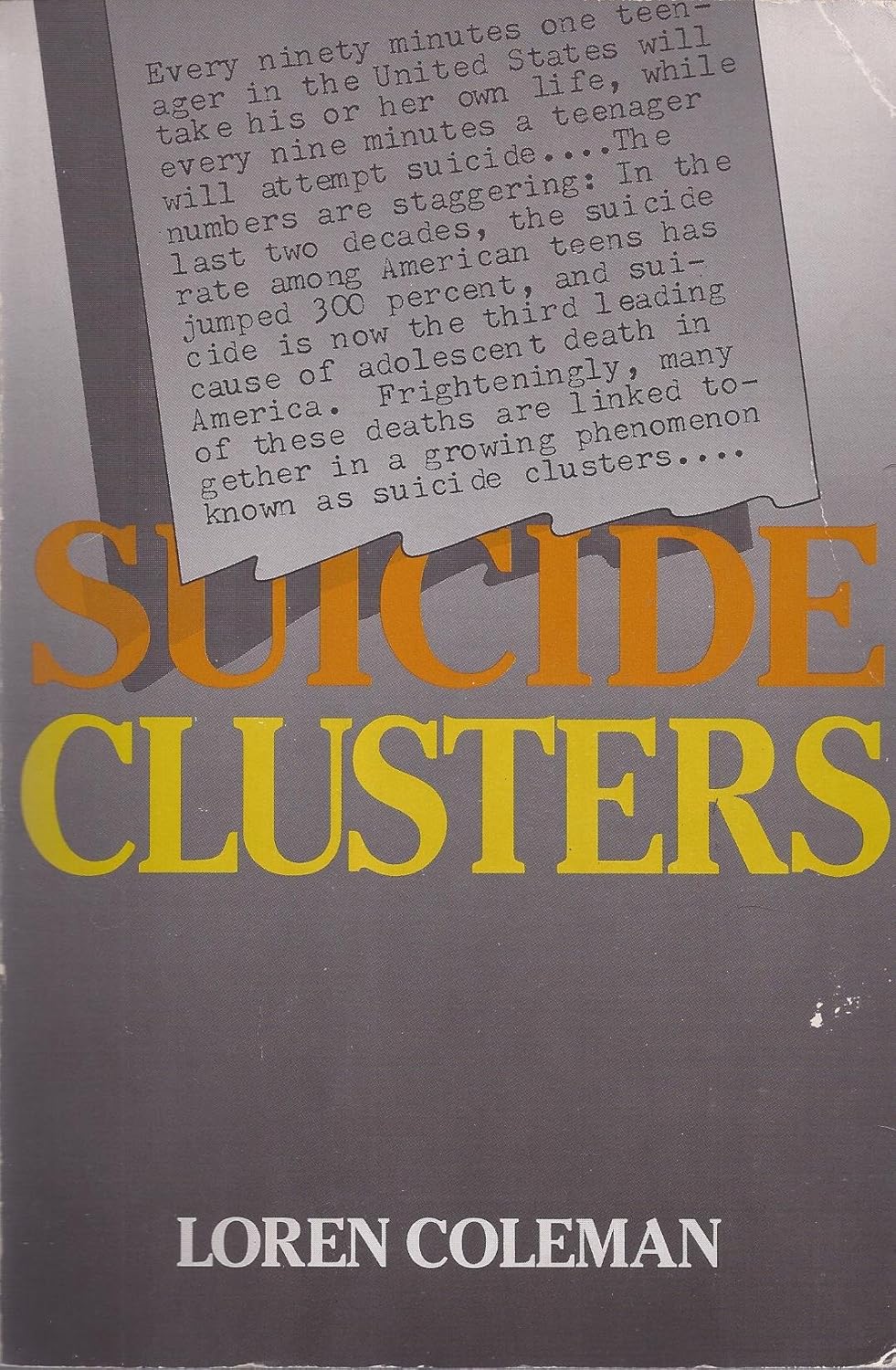Suicide Clusters

Sometimes suicides don’t occur randomly across time and space. Sometimes they seem to act like an epidemic or a contagion. They start, and they drive more suicides than would be expected. We call them Suicide Clusters. In a previous review of Life Under Pressure, the authors took apart a single cluster trying to understand its causes and what could be done to stop the spread.
Suicide Clusters is more of a review of the suicide clusters that have occurred than an attempt to focus on how they form or what can be done to prevent them.
From the Start
It’s easy to believe that suicide clusters are a new phenomenon, but they appear to go back to at least the fourth century BC. While there’s some question about the degree to which animals have the level of consciousness necessary to die by suicide, if we allowed that they did, there would be reports of mass animal deaths. Aristotle was reportedly mystified by mass beachings of small whales that occurred routinely.
Death Myths
Some of what may make the contagion spread is a set of beliefs about death that aren’t realistic – and certainly can’t be verified. There’s a belief that death is painless, but as Marcia Linehan says in Building a Life Worth Living, there’s no data to support that. More broadly, some beliefs include the ability to observe others mourning the death. The idea is that somehow someone can be dead and still be conscious, as if somehow death unmoors consciousness from the body.
Finding strategies for helping individuals challenge their beliefs about what death might mean – and particularly how it might be better – is an important deterrent to the development of suicide clusters.
Media Coverage
Much has been made of the impact of the media, including news reports, books, films, and TV series, on suicide rates. These effects are real, and they are why there are recommendations for the media for how to report on a suicide death. The short version of these guidelines is to not glamorize the death.
In Community
These are guides for how schools and communities can use to craft their responses as well, but these guides are often filled with contradictions that are difficult to navigate. Finding a path that acknowledges suicide as a mode of death but doesn’t glamorize it isn’t easy. Allowing meetings and memorials in ways that are consistent with other deaths seems easy, but it’s not.
However, the effort is necessary to help prevent Suicide Clusters.
